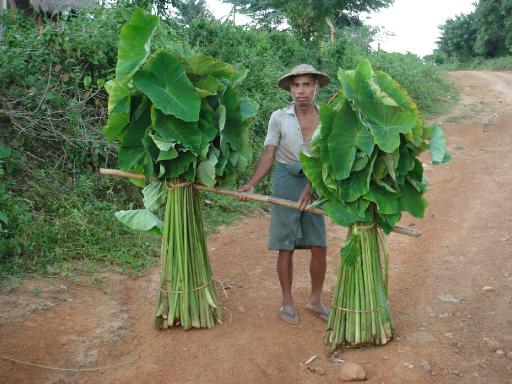
Recently Rated:
Stats
Work interests: Crop Wild Relatives (CWR), plant domestication, crop history, biodiversity, ethnobotany
Affiliation/website: National Museum of Ethnology, Osaka, Japan
Preferred contact method: Any
Preferred contact language(s): English, German
Contact: Dr Peter J. Matthews, Project Leader: pjm [at] minpaku [dot] ac [dot] jp
Favourite publications:
Project proposal - purpose of research
Taro, Colocasia esculenta (L.) Schott, is a root crop and leaf vegetable found in tropical to temperate regions of Africa, Asia, Oceania, and the Americas.
Throughout lowland Southeast Asia, wild populations of C. esculenta grow along roadsides, ditches and canals, and on the banks of ponds, streams, and rivers (Fig. 1).

Figure 1 In N. Vietnam, C. menglaensis Yin, Li, & Xu (left), and C. lihengiae Long & Liu (centre) carry the same chloroplast genome as wild C. esculenta in a natural lowland swamp (right) but have species-specific, nuclear genome ITS sequences (Matthews, Ahmed & Nguyen, 2016 “Sympatry of Colocasia esculenta (taro) and its wild relatives in Southeast Asia” Paper presented at 8th World Archaeology Congress, Kyoto, 28. Aug.-2. Sept. 2016).
These rarely studied wild populations are widely used as free sources of food for local people and fodder for local pigs. They actively invade the open habitats created by human activities, spreading vegetatively and by seed, and may represent the most abundant wild vegetable source in Southeast Asia.
To test old and new domestication models (Fig. 2), we will:
(i) map the distribution of wild populations of C. esculenta ,
(ii) record their morphological diversity
(iii) collect leaf tissue samples for DNA analysis, and
(iv) compare the wild populations with cultivated C. esculenta and wild Colocasia species using DNA tests for past hybridization.

Figure 2 Domestication models: I. Old : linear process, one species (without hybridization). II. New : hybridization & introgression among multiple species, then spread to lowlands, use, selection, and domestication (= ‘floodplain weed theory’ of Smith, 1995, applied to C. esculenta ).
To conduct the research, convene related meetings, and prepare publications, we will establish an international “ Wild Taro Working Group ” composed of local counterparts and others with relevant expertise and interests.
